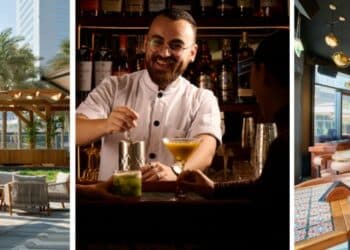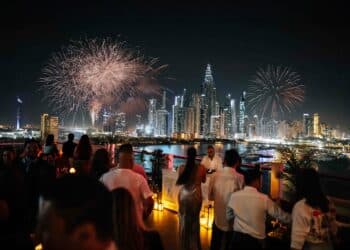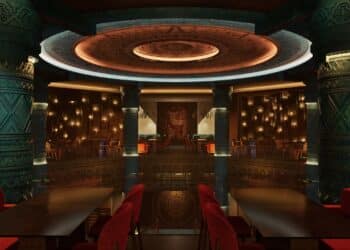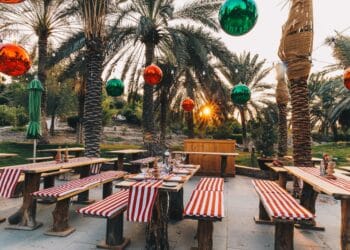Following the launch of the second Coya in the UAE, the brand’s global executive chef, Sanjay Dwivedi, speaks to Catering News about how the venue in the capital compares to its big brother in Dubai.
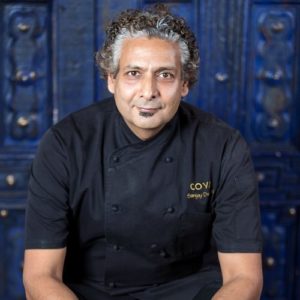
The second UAE Coya opened its doors in March at The Galleria on Al Maryah Island, Abu Dhabi as part of The Dining Collection, a group of chef- and restaurateur-led concepts with existing regional credentials, such as Nusr-Et, Loca, Roberto’s, Bentley Bistro and Bar, Nolu’s, Almaz by Momo, Emporio Armani Caffe and Coya’s sister brands, La Petite Maison and Zuma.
According to Coya global executive chef, Sanjay Dwivedi, opening the Peruvian restaurant and pisco bar in Abu Dhabi was a smoother process than launching the Middle East’s debut Coya at Four Seasons Dubai at Jumeirah Beach in late 2014.
“We started the Abu Dhabi project early last year and opened in March to the public for the first time with amazing success. The guys have done an amazing job and it makes my job look even easier. It’s easier anyway to open the second restaurant I think,” Dwivedi tells Catering News during a visit to the Abu Dhabi venue.
Even though his role is very much focused on developing the menus for the five Coyas around the world – two in the UAE, two in London and one in Miami – Dwivedi believes that at early stages of opening, it’s equally important to ensure the “energy” is correct.
“I’m sitting at the restaurant now and any time I go to a restaurant anywhere I open, I always sit at different tables just to feel the energy of the table; you see different things from different tables.
“When you do these soft openings, it’s not about what the food is going to taste like. It’s about feeling the energy of the room and the kitchen and how the kitchen is going to work, and how the front-of-house is going to work, and then how everything is going to come together and ensuring we deliver at the same time.”
“When you do openings it’s not about what the food is going to taste like. It’s about feeling the energy of the room and the kitchen and how the kitchen is going to work, and how the front-of-house is going to work, and then how everything is going to come together and ensuring we deliver at the same time” – Sanjay Dwivedi
Another element that has made the opening flow well, has been the staff, who have been trained intensively in Dubai.
“The staff in Abu Dhabi were trained in Coya Dubai, both front of house and back of house, so they know the product. The training has been intense and some of the staff have been promoted – those who have been with us for a while. The head chef of Coya Abu Dhabi was previously sous chef at Coya Dubai and he’s been with us for the past three years and knows Coya inside out. There are also some sous chefs who have been promoted within the company – the guys have done an amazing job.”
With just 80 seats inside, 25 on the terrace and 12 in the private dining room, the Abu Dhabi restaurant is smaller than the Dubai venue, however according to Dwivedi it also boasts the best views of any Coya in the world, overlooking the waterfront promenade. “In terms of décor, they are quite similar but the Dubai property is huge, whereas this one is much cosier,” says Dwivedi. “When you walk into Coya Dubai you think ‘wow’ whereas with Coya Abu Dhabi, you’ll be intrigued and you’ll either take the lift or stairs to come down to it and you’ll see the whole restaurant – it’s very different.”
The menu has also been reduced in size and adapted slightly to suit a more business-centric location – compared to the resort location of Coya Dubai. “We’re really focusing on Coya Abu Dhabi for lunch because it’s in the business area, so it’s fast, it’s healthy and it’s quick – that’s the message we’re trying to tell everyone,” says Dwivedi. Adapting dishes to the local market is also key. Given that the original Coya menu had already been tweaked to cater to the Dubai clientele, this aspect of opening in the capital was again, easier.

“When I’m in Miami or Dubai, I’m a guest in your country. I have to respect the culture, the eating and drinking habits and so forth. The menus are the same all over Coya, but we’ll try to adapt 20 – 25% to the country. For example, in the UAE people love meat but in London they prefer the fish dishes. There’s fish available in both locations, but that extra 20% is probably an extra meat dish on the menu here.” Dishes on the menu in the Abu Dhabi restaurant include the ‘Tiradito de Serviola’, a Peruvian raw fish classic, mixed with truffle oil and chives; Chilean seabass cooked in a brassa (an open charcoal grill); in addition to ceviche, anticuchos (marinated skewers fired on a charcoal grill), and a number of meat and poultry dishes.
And while having the likes of Zuma and La Petite Maison next door could prove challenging, Dwivedi believes that The Dining Collection will help to solidify the eating-out culture in Abu Dhabi, and collectively the restaurants may help the capital compete better with Dubai’s thriving F&B scene.
“I think Abu Dhabi is growing and changing – even since we first saw the site just over a year ago. A lot of people were going first to Dubai to eat and now they are thinking ‘why not just stay in Abu Dhabi?’” Dwivedi comments.
“It’s great to have competition around you because it raises your game. In the end, the tough survive and the customer gets the best and that’s what we’re all striving to achieve.”
In addition to the newly opened Abu Dhabi venue, Coya Angel Court has just opened, marking the brand’s second London venue. Juggling two new restaurants in addition to the already-established three, Dwivedi is keen to consolidate before moving on to any other new projects.
“We take it as it comes but my future plan is to settle this little baby,” he says, referring to the Abu Dhabi Coya. “You have to be careful not to outgrow yourself. I’ll make sure that both my new Coyas are performing the way we want them to, and then we’ll see.”

